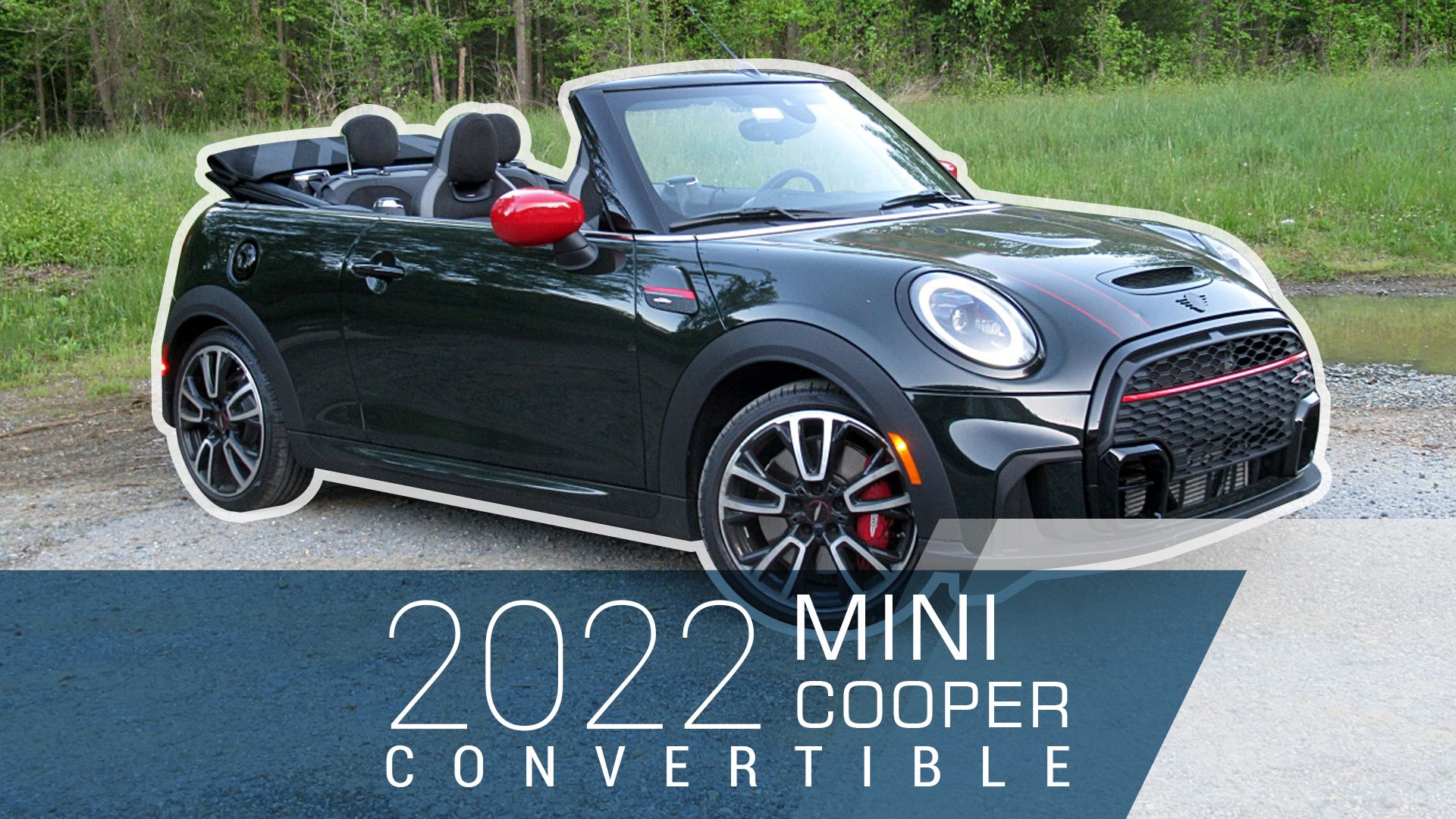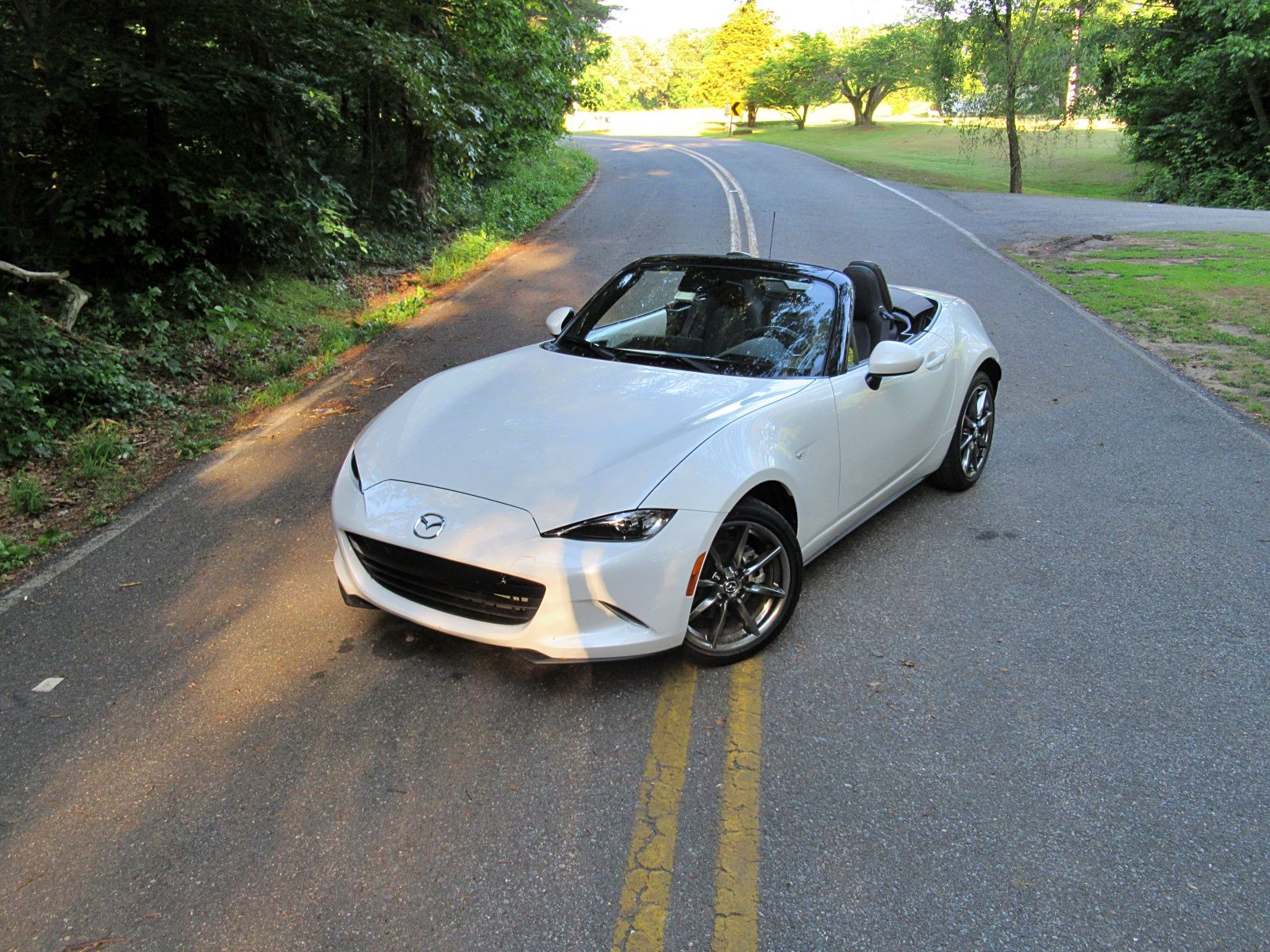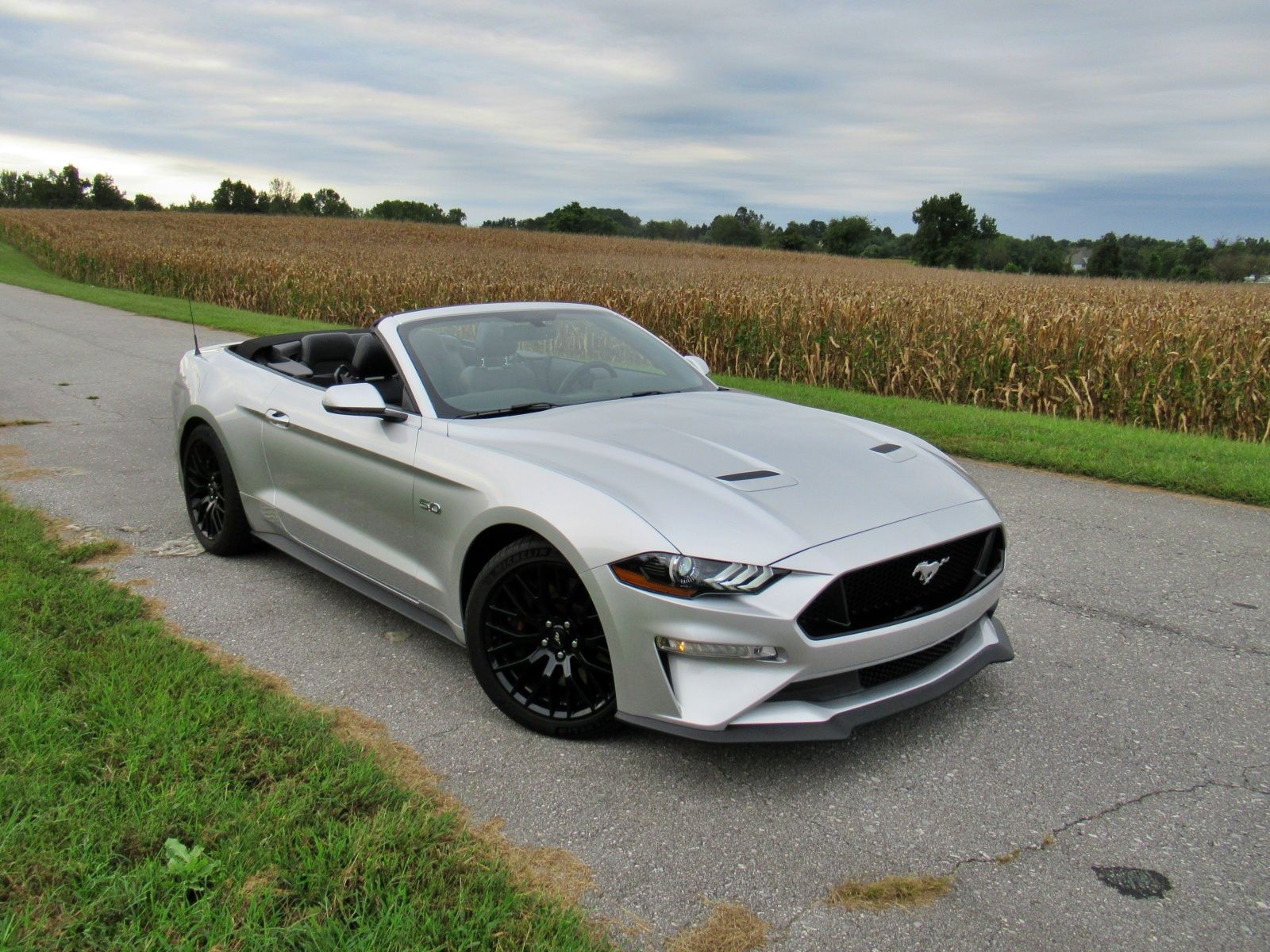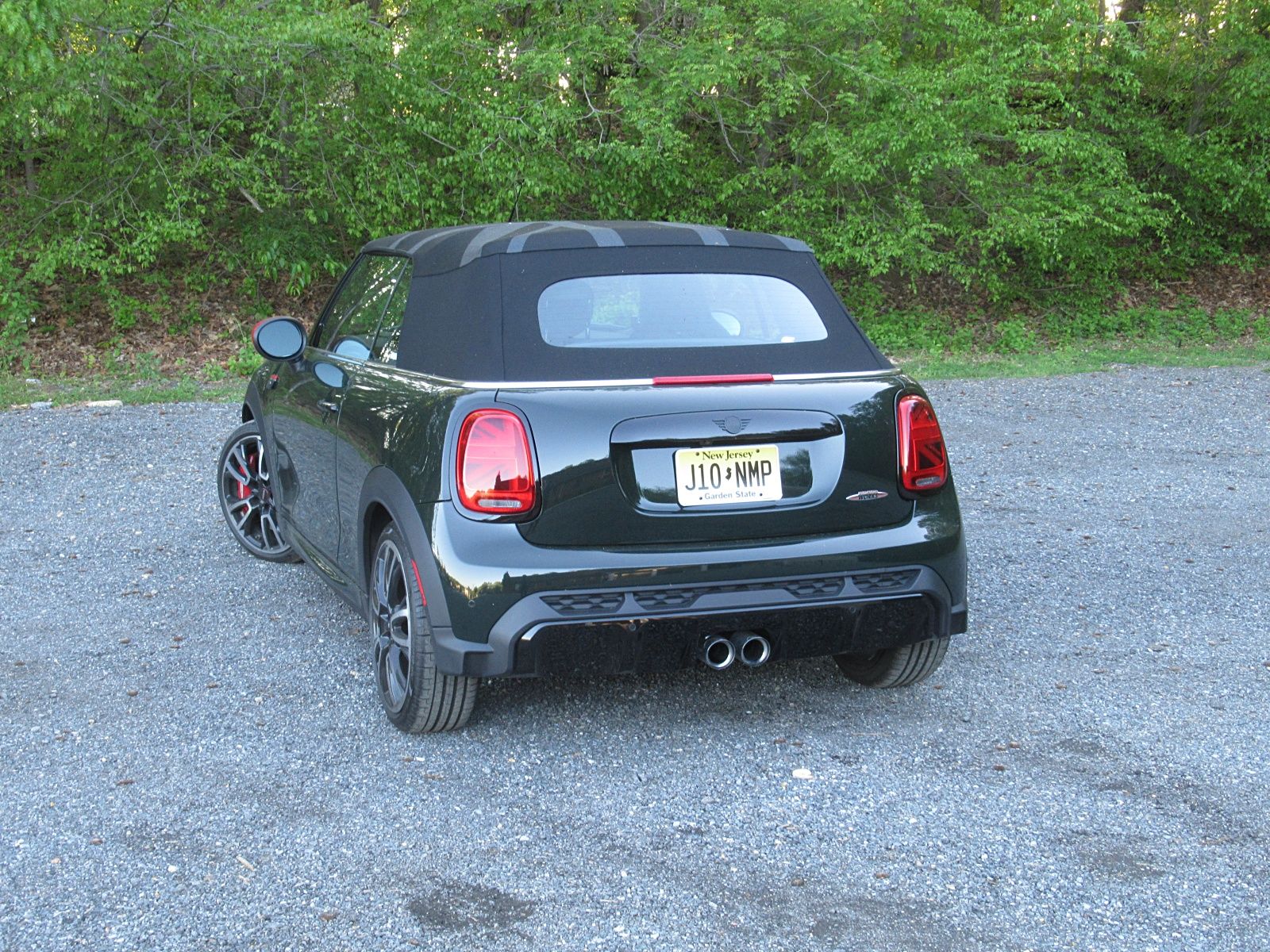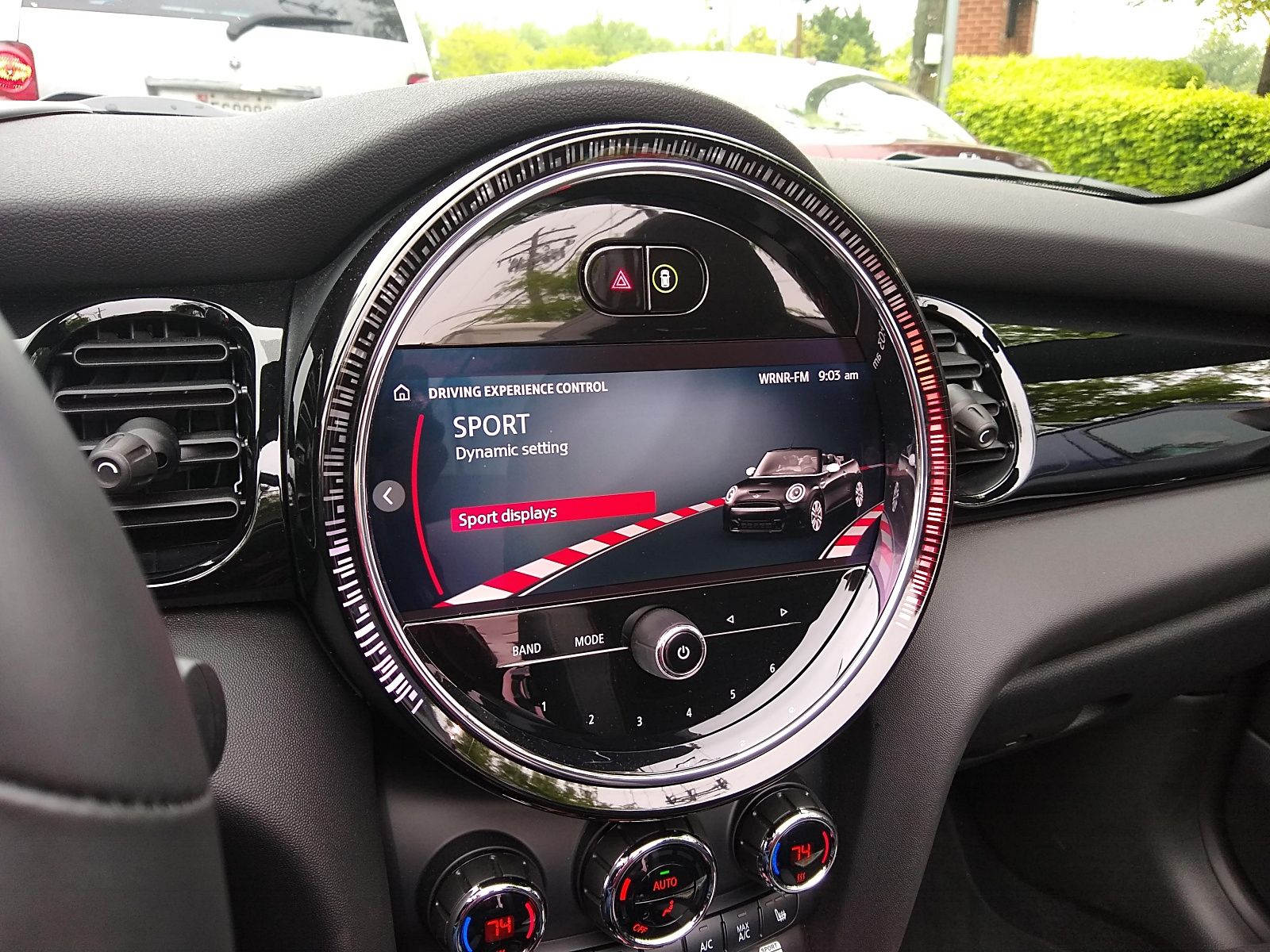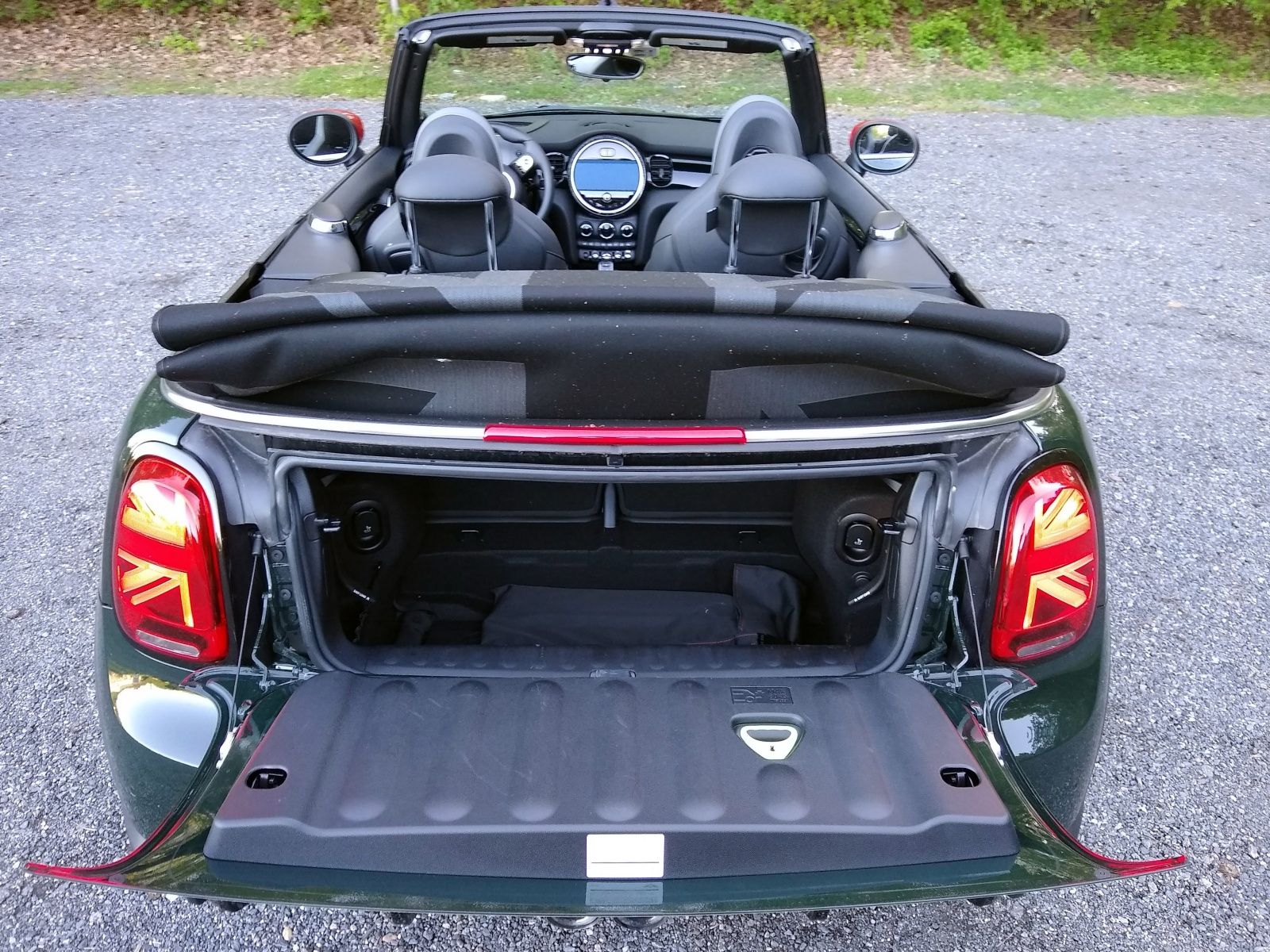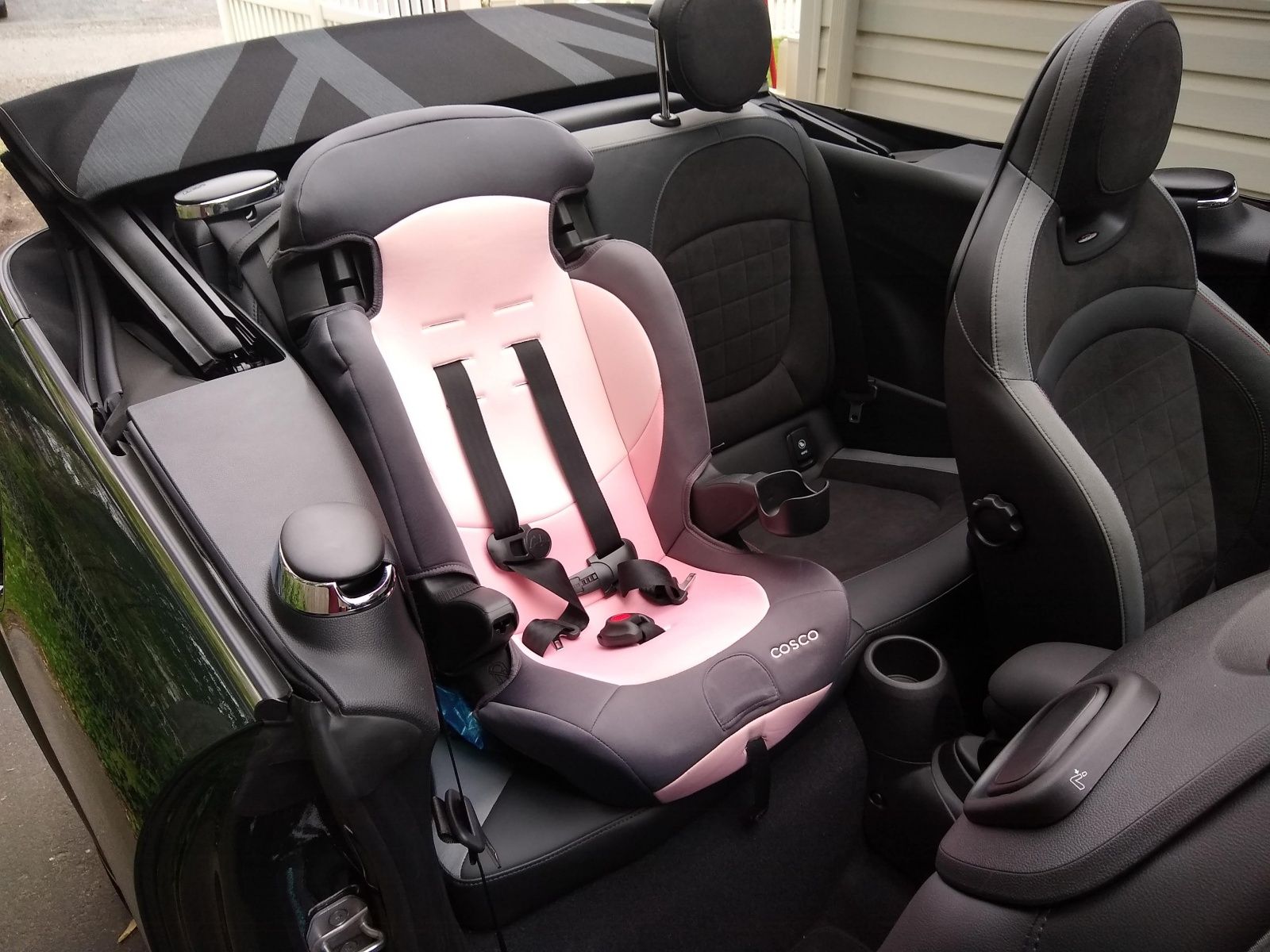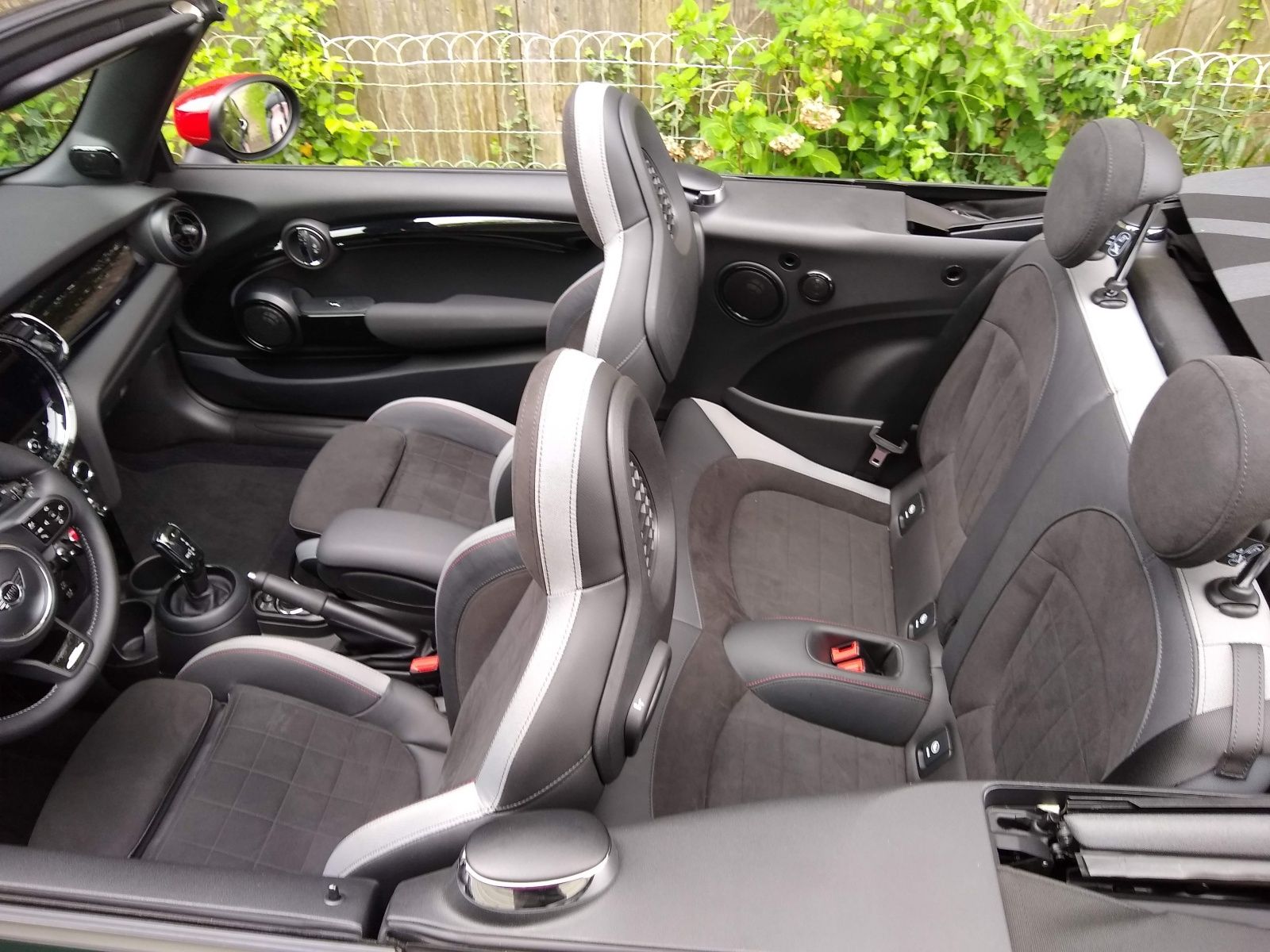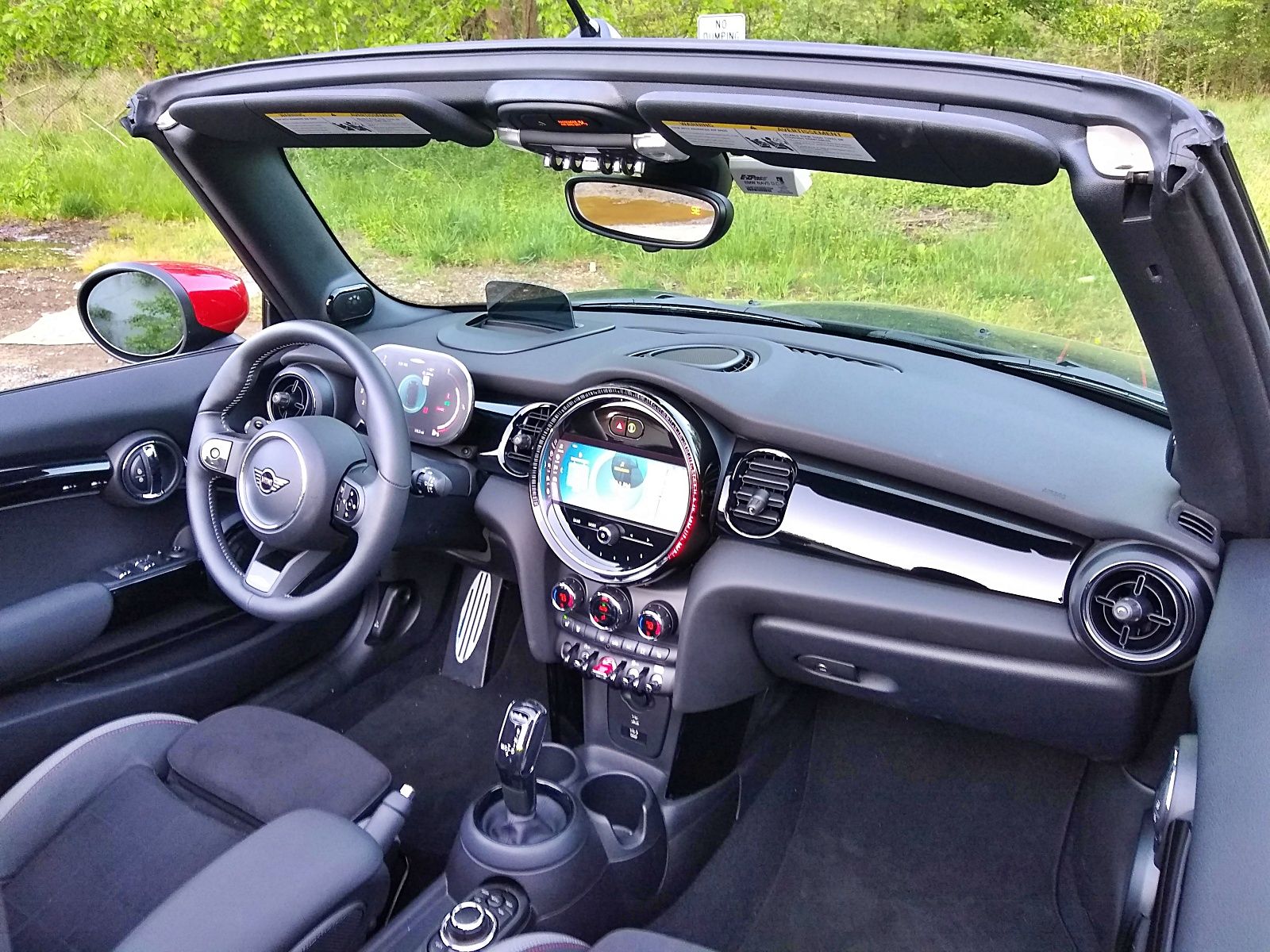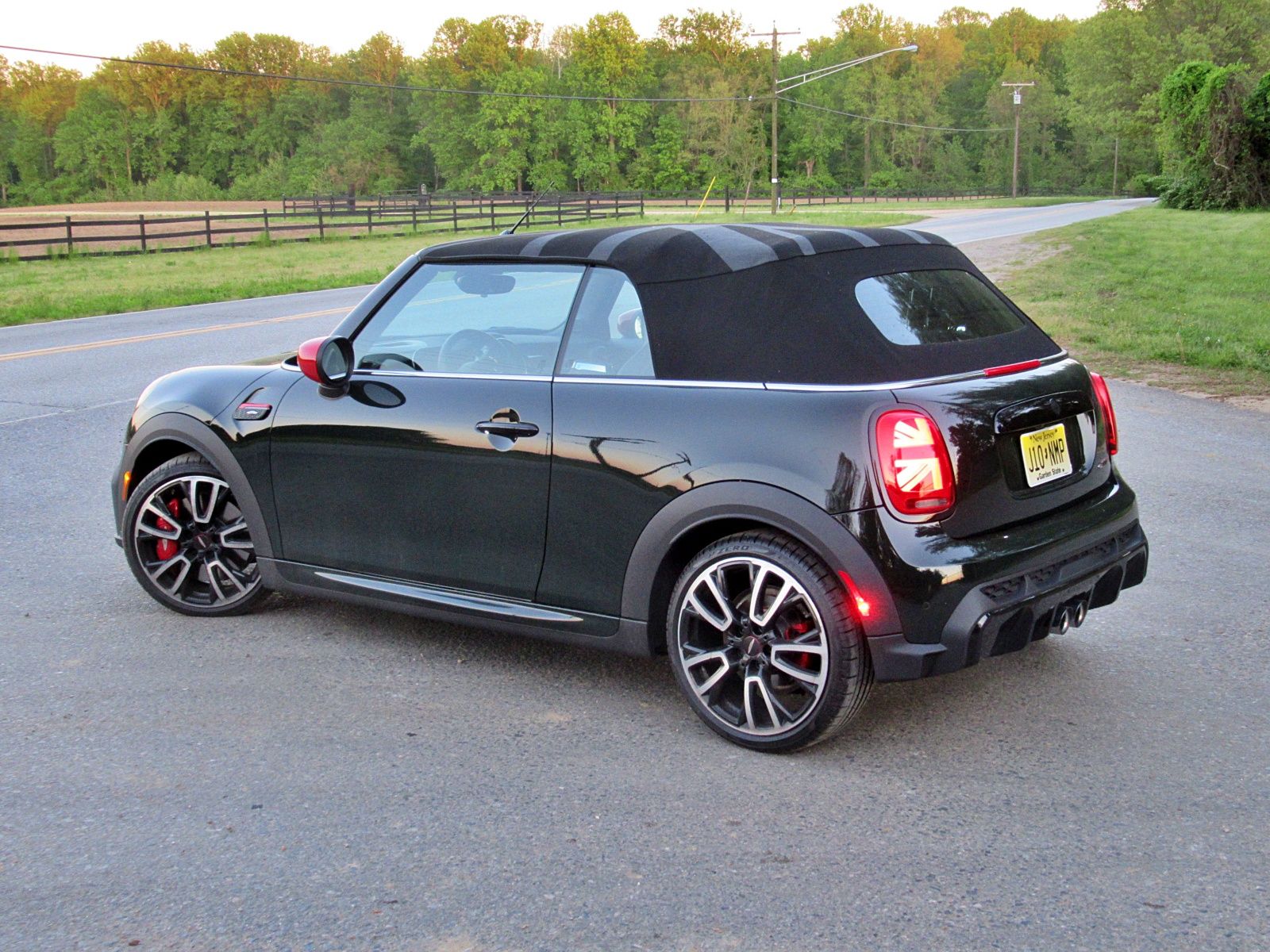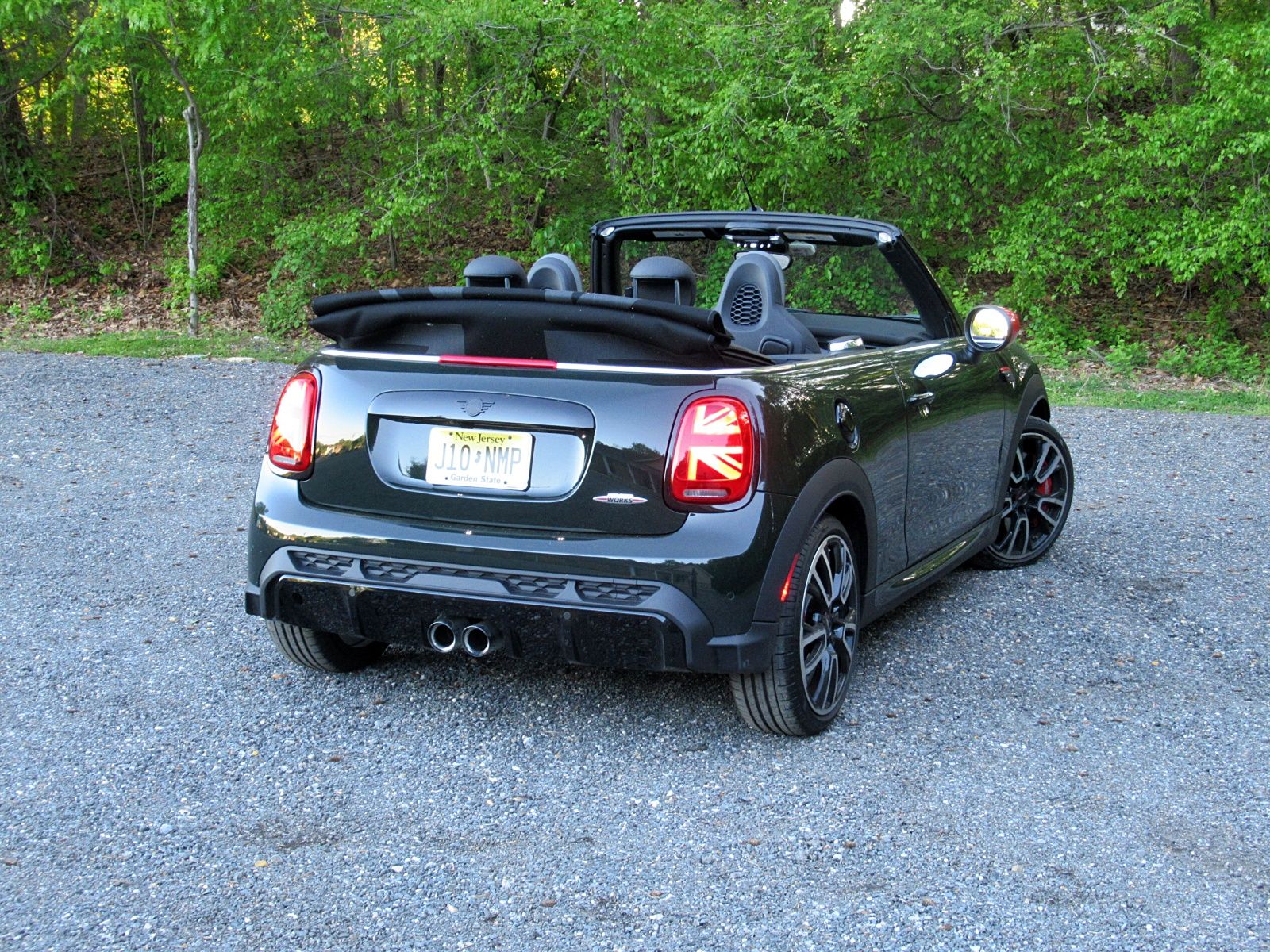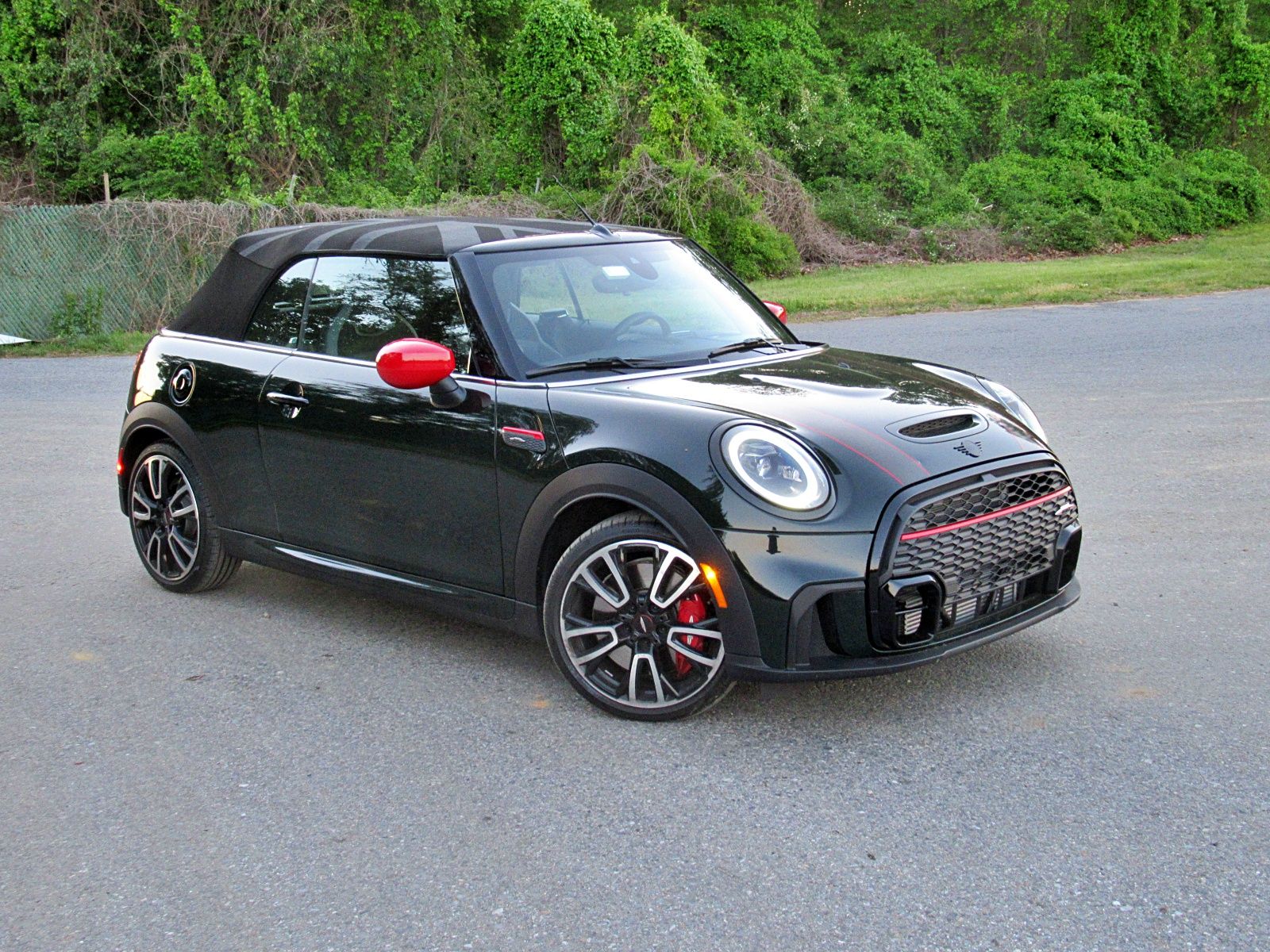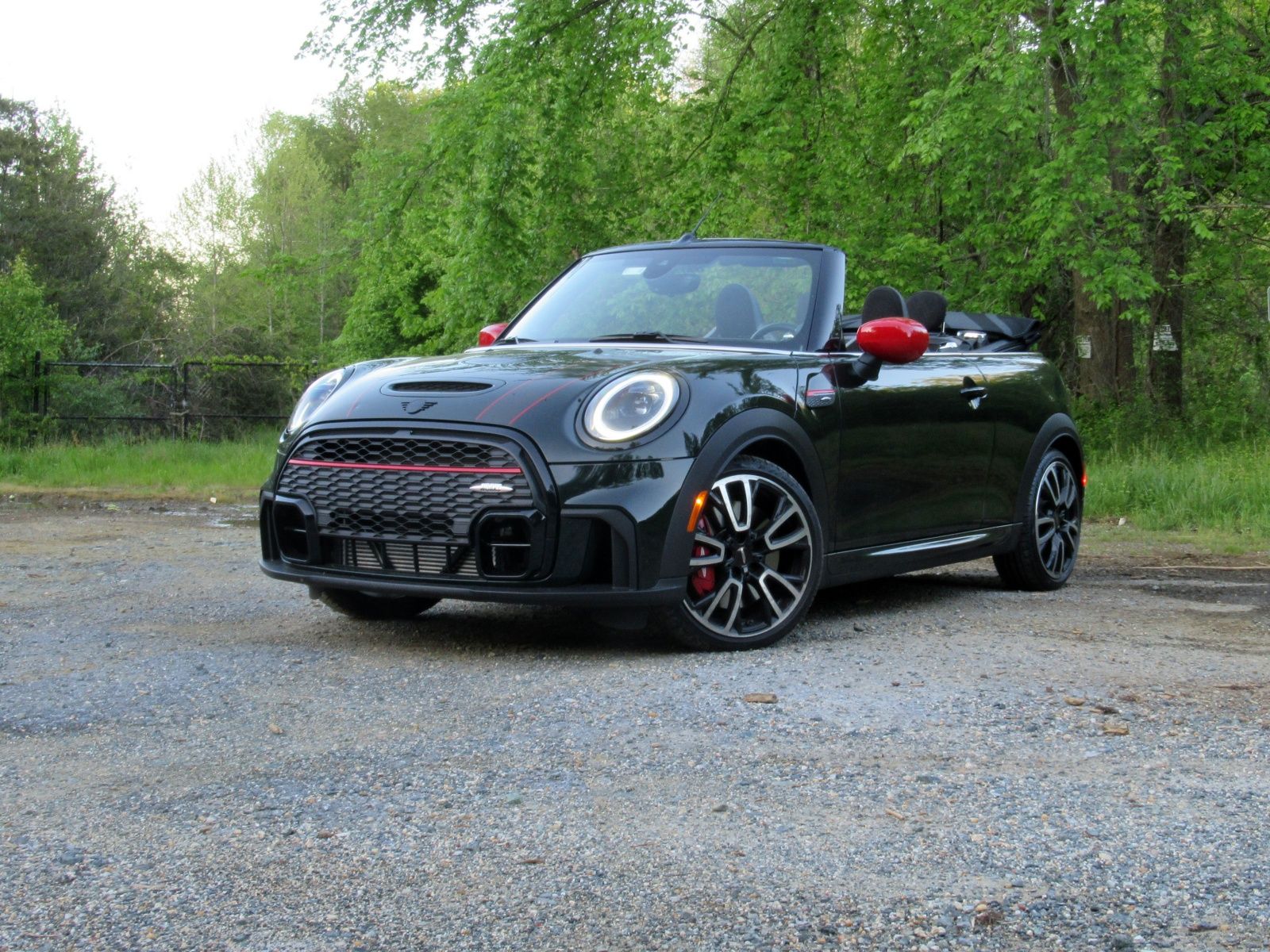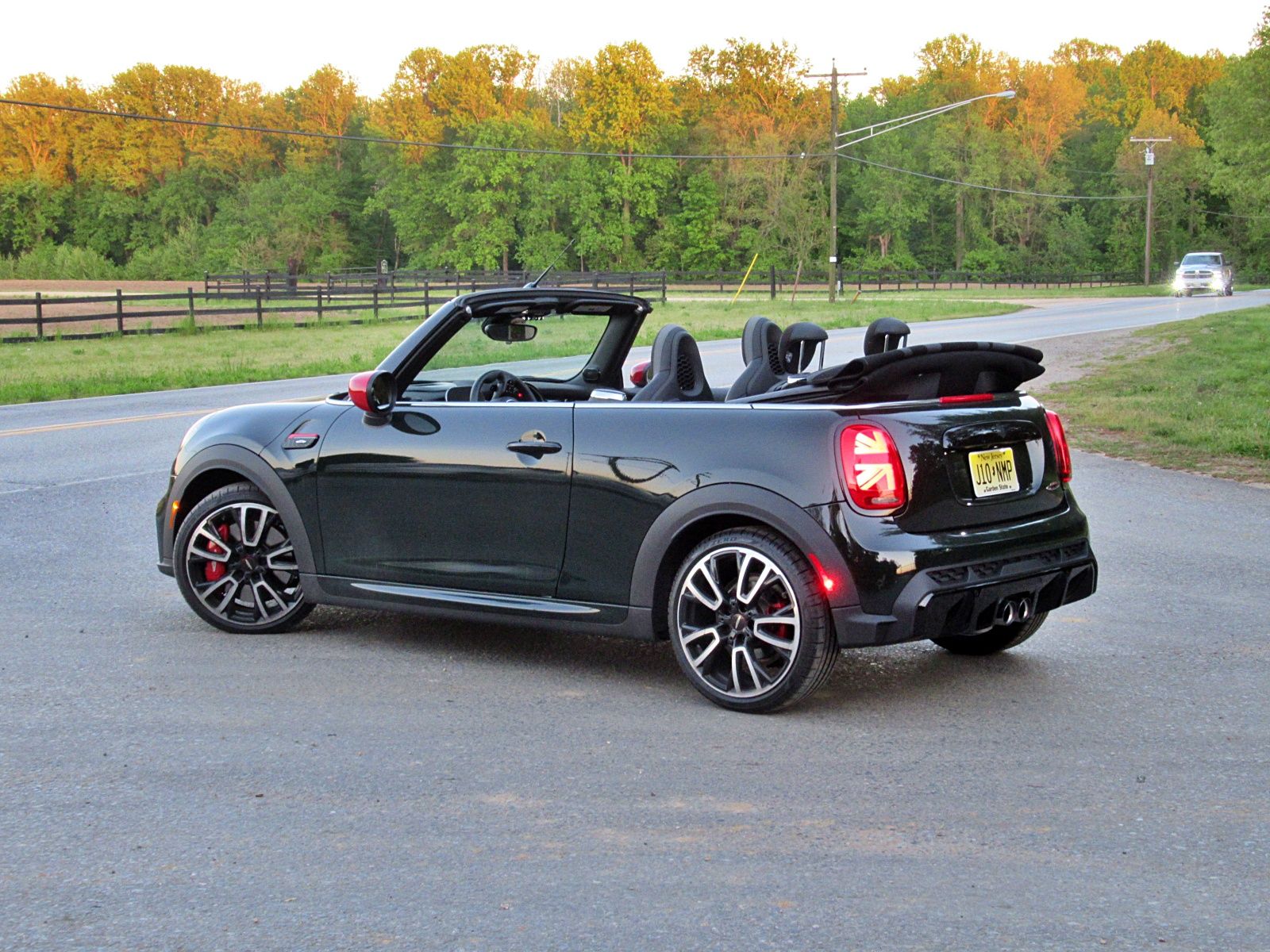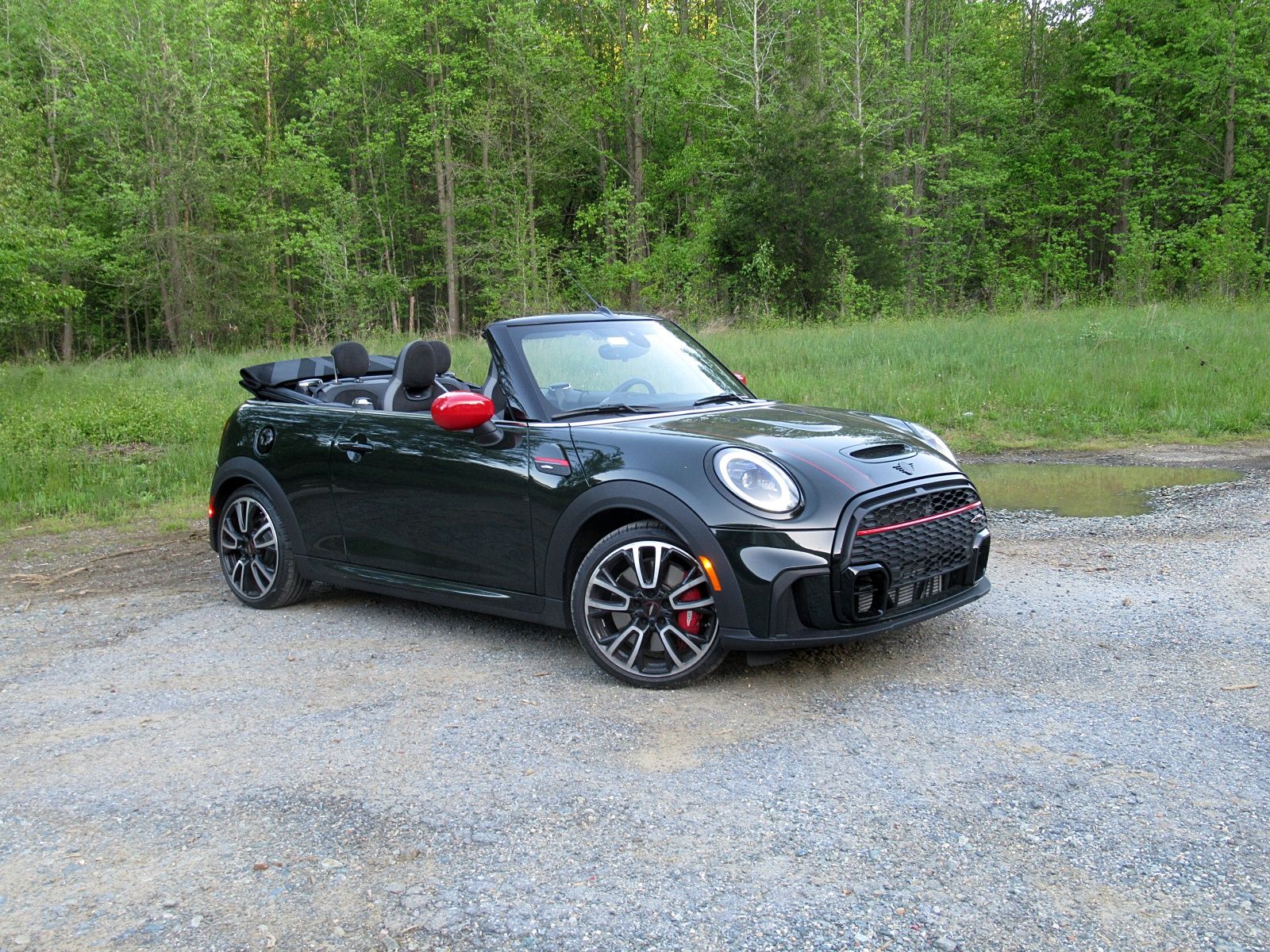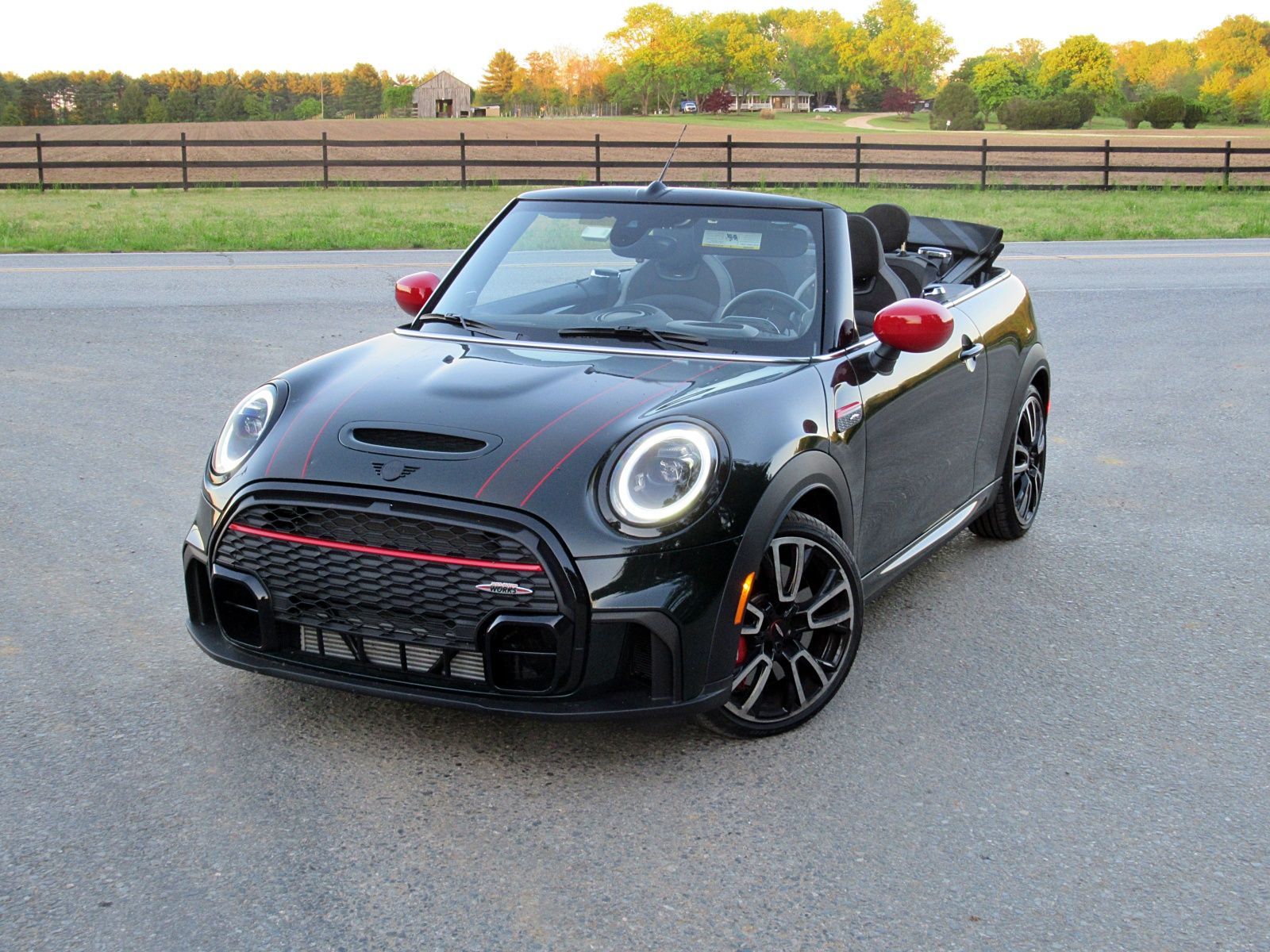You’ve likely heard the saying - “Miata Is Always The Answer,” and for good reason. Mazda’s magnificent two-seat roadster is a delight to drive that provides an old-fashioned connection between the driver and the road. It’s also the least expensive convertible you can buy, supplying that exclusive separation between cabin and sky. It’s a joyful car that costs less than the best-selling crossover SUVs. Why wouldn’t it be the answer for anyone who loves driving?
But maybe Miata isn’t always the answer and we don’t even mean people who are asking about three rows of seats and 10,000-pound towing capacities. Instead, we spent a week driving the 2022 Mini Cooper Convertible — whose starting price, $27,900, is just $600 above the base 2022 Mazda MX-5 Miata. With its retro-British charm, turbocharged engines, four-passenger capacity, and front-wheel-drive configuration, the Mini is no Miata clone. But if you’re interested in a small, fun-to-drive convertible, it’s one of just two options you can buy from new today.
Here’s what we learned about the open-top Mini.
2022 2022 Mini Cooper Convertible Review: Is ‘Miata’ Really Always the Answer?
- Make: Array
- Model: 2022 2022 Mini Cooper Convertible Review: Is ‘Miata’ Really Always the Answer?
- Horsepower: 536 @ 8000
- Transmission: single-speed
Overview
The reborn Mini Cooper arrived as a 2002 model, helping popularize the idea of a premium-priced small car. Over the following two decades, the Mini lineup has grown from the original three-door hatchback to also include five-door hatches, wagons, and even a crossover, in addition to the convertible.
The company’s mechanical underpinnings have advanced over the years; the latest Minis ride on the same platform as front-drive BMW models like the X1 crossover and 2 Series Gran Coupe sedan. But the same ingredients carry over from the Bush administration and a suspension that’s tuned for zippy handling over a gentle ride.
Performance
The Cooper convertible is available with a choice of three engines and the choice of manual or automatic transmissions. According to Mini, the base 1.5-liter three-cylinder in the Cooper produces 134 horsepower and 162 pound-feet of torque. It reaches 60 mph in 8.2 seconds. We expect that can feel lively enough, especially with the top open and the windows down, but enthusiasts will likely gravitate toward the 2.0-liter four-cylinder.
In the Cooper S, the 2.0-liter makes 189 horsepower and 206 pound-feet of torque, with a quoted 0-60 time of 6.7 seconds. Meanwhile, the JCW with 228 horsepower and 235 pound-feet, dips to a company-estimated 6.3-second run. To us, the JCW’s engine delivered an enthusiastic snarl but didn’t feel downright explosive.
Here we also come to the first hard knock against the Mini for some Miata buyers. While a six-speed manual transmission is theoretically standard equipment on the base and S engines, a seven-speed dual-clutch automatic becomes your only choice once you start adding option packages.
We ran a nationwide inventory search on Mini’s website and found 141 Cooper convertibles, all with automatic transmissions. The JCW model, like our test car, comes only with an eight-speed automatic.
While the Miata isn’t known for its straight-line speed, it keeps up with even the Mini JCW in the 0-60 sprint. Credit its ultra-light curb weight, some 500 pounds less than the Mini, combined with a respectable 181 horsepower and 151 pound-feet of torque.
Driving Impressions
We also didn’t find the Mini JCW to be quite as lively as the Miata in cornering, either. Obviously, that’s a tough standard, but even setting aside a two-seat rear-drive roadster, we’d still wish for quicker, sharper steering to match the Mini’s go-cart vibe.
This is an agile, fun-to-drive car, and the JCW’s sport-tuned suspension keeps body roll in check. But there would be room for it to feel more like a hot hatch and less like a BMW X1. Even our test vehicle’s adaptive dampers didn’t let us transform it into a true performance machine.
On the other hand, we were pleasantly surprised by the JCW’s relatively smooth, stable ride. The bigger-BMW influence isn’t all negative. If your idea of a fun car means a sporty-looking and fairly zippy convertible rather than a perfectly balanced sports machine, the Mini’s unexpected refinement is an asset. And we’d much sooner take a road trip in the Mini than the Miata.
Fuel Economy
The Mini’s fuel economy is great for a sporty car though not minicar-efficient. What’s more, a preference for premium fuel cuts into your fuel savings. By the numbers, the three-cylinder convertible manages an EPA-estimated 29 mpg in the city, 38 mpg on the highway, and 32 mpg combined with an automatic transmission, while the manual does about 1 mpg less.
The Cooper S averages 27 MPG city, 36 MPG highway, and 30 MPG combined with an automatic but a mere 23 MPG city, 33 MPG highway, and 26 MPG combined with a manual. And the automatic-only John Cooper Works returns an estimated 24 MPG city, 33 MPG highway, and 28 MPG combined.
2022 Mini Cooper Convertible Specs
|
Trim |
Cooper |
Cooper S |
John Cooper Works |
|---|---|---|---|
|
Enigine |
1.5 L Inline 3 |
2.0 L Inline 4 |
2.0 L Inline 4 |
|
Horsepower |
134 hp |
189 hp |
228 hp |
|
Torque |
162 lb-ft |
207 lb-ft |
236 lb-ft |
|
Transmission |
6-Speed Manual |
6-Speed Manual |
8-Speed Automatic |
|
0-60 |
8.2s |
6.7s |
6.3s |
|
Drive |
FWD |
FWD |
FWD |
|
Mileage |
31 MPG |
26 MPG |
28 MPG |
Exterior Design
The Mini's design is about a mix of spunk, whimsy, and British cues. It’s cute yet also aggressive. Our test car had stripes on the hood, red side mirrors on a green body, and a Union Jack on the fabric convertible top — without really having anything you wouldn’t expect from a Mini. The 2022 Mini Cooper still boasts a petite footprint (at 152 inches long, it’s even a couple of inches shorter than a Miata), round headlights bulging out of the fenders.
The headlights have an LED oval, and the intricate taillights would combine to make a single British flag (fresh updates for 2022). Because the car isn’t very long, the convertible top reaches all the way to the back of the car when it’s up and perches jauntily on the back like a spoiler when it’s open.
Exterior Colors
|
Standard |
White Silver Metallic |
$0 |
|||
|---|---|---|---|---|---|
|
Zesty Yellow |
$0 |
Optional |
Chilli Red |
$500 |
Exterior Dimensions
|
Length |
152.8 in |
|---|---|
|
Width |
75.9 in |
|
Height |
55.7 in |
|
Wheelbase |
98.2 in |
|
Ground Clearance |
4.5 in |
|
Curb Weight |
3,143 lbs |
Interior Quality and Technology
This interior design is more about style than ergonomic perfection. The latest Mini generation removed the speedometer from the center of the dashboard; it’s now a simple and conventionally placed digital display. But Mini leaves a round binnacle to hold this year’s updated 8.8-inch touchscreen infotainment system.
Niggles like slow-to-respond seat-heater controls are a frustration with no aesthetic tradeoff. But the Mini does preserve basics like a volume knob and Apple CarPlay (though not Android Auto) smartphone integration.
Passenger and Cargo Accommoadations
It’s not news to anyone that the Mini is a small car. Still, you can move the front seat back for plenty of legroom. And the seating position is higher and more upright than a Miata’s, making it easier to get in and out of the Mini. There’s also more headroom and more space for the front passenger.
On the other hand, this isn’t a super-sporty seating position. And we expected the John Cooper Works version in particular to have more lateral support. Overall, for better or for worse, it’s more like sitting in a regular economy hatchback than a sports car. The difference, of course, is that you can lower the roof.
(In another neat trick, you can keep most of the top up while activating a sunroof mode for a bit of fresh air.) The Mini has a power-operated soft top that opens or closes in 18 seconds, but you have to hold down a switch the whole time or the process freezes halfway through. The Miata’s manually operated top is up or down in a couple of seconds.
Another notable difference over the Miata is that the Mini has a backseat. It’s tiny; with a tall adult sitting in the front, the front seat is all but jammed against the back. But someone could squeeze in for emergency transportation, and it’s a useful place to toss some cargo.
What’s more, this rear seat is a safer place to let a child experience the pleasures of open-top driving than the front seat of a two-seat convertible. Just scoot the front passenger seat pretty far forward to make room.
Cabin storage is more conventional, so you don’t have to worry about finding a place for your small items. With no rear deck, the Mini has a tailgate-style fold-down trunk that provides easy access to this limited space. You can even fold down the rear seat to expand your cargo volume.
For more cargo space, the Mini Cooper Convertible provides a 5.6-cubic-foot trunk. That’s about 1 cubic foot more than the Miata, but otherwise, it’s about as small as you’ll find in a modern car.
Interior Dimensions
|
Seating Capacity |
4 |
|---|---|
|
Headroom (front) |
39.8 in |
|
Headroom (rear) |
39.0 in |
|
Legroom (front) |
41.4 in |
|
Legroom (rear) |
30.9 in |
|
Shoulder room (front) |
51.0 in |
|
Shoulder room (rear) |
39.7 in |
|
Cargo Room |
5.6 cu-ft |
2022 Mini Cooper Convertible Price
2022 Mini Cooper Convertible Price
|
Trim |
Price |
|---|---|
|
Cooper |
$27,900 |
|
Cooper S |
$31,900 |
|
John Cooper Works |
$38,900 |
The base 134-horsepower three-cylinder Mini Cooper Convertible offers open-top driving for the tightest budget, starting at $27,900. The 189-horsepower Cooper S starts at $31,900, and the 228-horsepower John Cooper Works (JCW) like our test vehicle starts at $38,900. (These prices exclude the mandatory but relatively modest $850 destination charge.)
These convertibles cost $5,000 to $6,000 more than equivalent two-door Cooper Hardtop models. Those prices can rise quickly as you add options, which are similar regardless of the model you choose.
Our test vehicle, for instance, had the Iconic package ($6,000), bringing adaptive dampers, a heated steering wheel and heated front seats, automatic climate control, an upgraded stereo, a navigation system, and some flashier exterior bits like the red side mirrors. Its total came to $46,350. And depending on the options you choose, even a three-cylinder Mini can get pretty close to that mark.
Mini Cooper Convertible vs. The Competition
2022 Mazda Miata
We’ve been making this comparison throughout our review, and it comes down to this: The Mazda MX-5 Miata delivers pure driving pleasure and superior value for the money, and it comes standard with an engine that’s as lively as the top Mini John Cooper Works. On the other hand, the Mini delivers more everyday comfort and practicality, with less attachment to the road but more space and a quieter ride. And its style and image give it a different vibe altogether.
2022 Ford Mustang and 2022 Chevrolet Camaro
Besides the Mini and the Miata, the only other affordable sporty convertibles left on the market are the Ford Mustang and Chevrolet Camaro. Both start in the low $30,000 range and feel massively wide next to the Miata or the Mini. But if you see size and power as an asset, it's surprising how much the Americans are offering you for the price of this little BMW-sourced Brit.
Final Thoughts
Driving a convertible isn’t like driving a regular automobile. In a world where most cars are quietly humming sealed capsules, a convertible is a fresh sensation of noise and wind. And the Mini Cooper provides one of the few ways to get this sensation on a reasonable budget.
The driving experience is more peppy and plucky than perfectly sporty. Still, even if the steering and seats come up short against the magic of a Miata and a manual transmission is much harder to find, it’s loads of fun compared with an SUV. What’s more, Mini works hard to make the car fun in other ways than its mechanical engineering, with a style and image of “I don’t take myself too seriously, but I could.”
Overall, when a tiny two-seat roadster can fit your life, Miata is always the answer. But when you need something more suited to the daily grind or a freeway slog, or you’re drawn to the Mini’s stronger personality, this one is another fine motoring companion.

